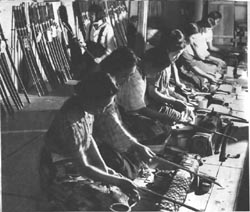 |
A real live look at a WW-II-era Japanese Sword "factory". Helping to keep the Japanese Army troops supplied with nicely polished and
properly assembled swords was part of the all out effort that even involved school
age children. |
 |
Polishers hard at work in a WW-II-era Japanese Sword "factory". Helping to keep the Japanese Army troops supplied with nicely polished and
properly assembled swords was part of the all out effort that even involved school
age children. |
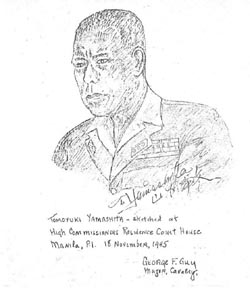 |
Yamashita autograph - this pencil drawing was
given to me by William Howard. It's a sketch
of General Yamashita during the War Crimes trials in Manila in 1945. The
drawing was made by one of his American court-appointed defense councils
(George Guy) during the trial and is signed by the General. |
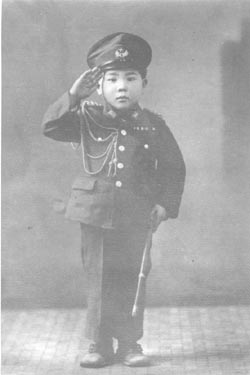 |
WW2 Pilot's Gunto - at last, the story
can be told of the almost mythical Pilot's Gunto. Like a regular Army Officer's
Gunto, only scaled down in size (including the fittings), legend has it that
these were carried by fighter pilots who wanted a smaller scale sword that would
fit in the cockpit with them when they flew on missions. Needless to say, with
such a story associated with them, when one does show up on the market every 5
years or so, it commands a hefty price. But alas, no photos of a Japanese
officer actually carrying such a Gunto have ever been found. But thanks to an
original photo album which I procured may years back, the true origin of the
"Pilot's Gunto" can be told. |
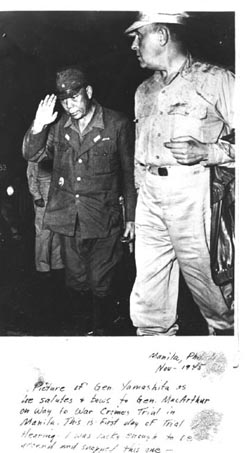 |
Generals MacArthur & Yamashita 'crossing paths' at the 1st day of the Manila War Crimes Trials in 1945.
Military courtesy dictated that General Yamashita be permitted to wear his sword during the trial. |
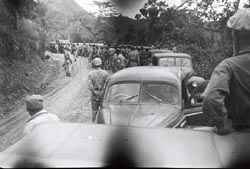
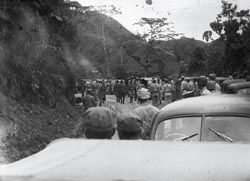

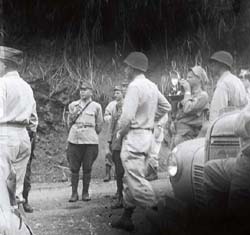
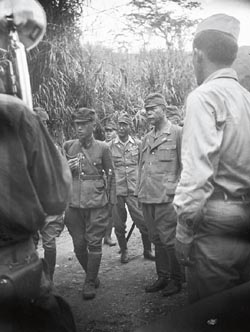
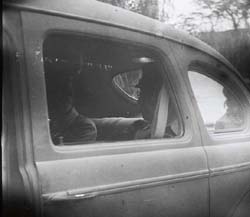
|
U.S. soldiers making the initial contact with General Yamashita and later, after his surrender in northern Luzon, (Baguio),Philippines, the General and his troops were escorted down from the hills.
(The General is leading his troops !) |
Most of the below photos were given to me a number of years ago by retired Captain Morris B. Haskell who also sold his swords to me.
He told me that he felt very fortunate to have been at the point of surrender to take photos ( the 2nd & 3rd photo's below) of the 'Tiger of Malaya' and his staff. |

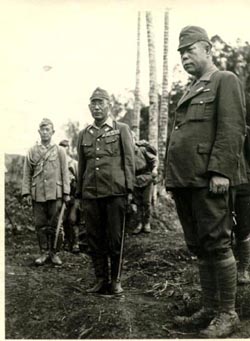 |
General Yamashita and a number of his staff at the point of surrender.
(Baguio, The Philippines, 1945) |
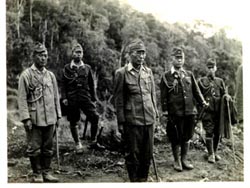 |
Another view of Yamashita's staff at the point of surrender.
(Yamashita's arm is barely visible at the far right side of the photo).
(Baguio, The Philippines, 1945) |
 \ \
\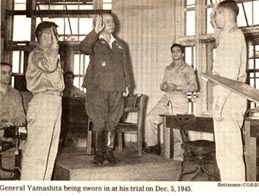 |
Yamashita with his appointed (U.S. Army) attorney and later being sworn in at his trial.
As he was the senior officer in The Philippines, in spite of the fact that he and his Army troops actually gave up fighting and were up in the hills of Northern Luzon, it was determined at his trial that he was fully responsible for the war crimes committed by die-hard Japanese navel forces in Manila during the closing days of the war and, he was subsequently hung. |